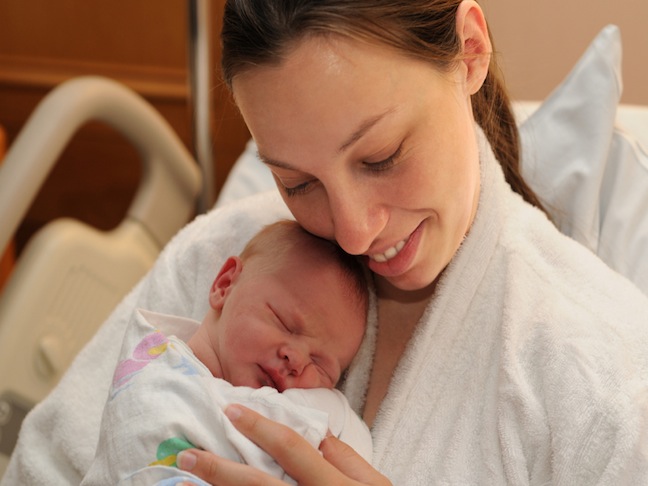If you’re having, or have recently had, a Caesarean Section, you’ll know it’s major surgery.
The recovery is not easy, and having a baby to take care of can make things seem even more difficult. The good news is that things do get easier, but for the first few weeks you really do need to take it easy.
In The Hospital
Your recovery begins in the hospital and there are steps you can make to help your body get back to normal as quickly as possible. Even though it will hurt, and you might not think you can do it, ask the nurses to help you get up and out of bed first thing the following day. Get your catheter removed and try to start walking. If you are told it’s okay, have a shower (have someone with you just in case) and try to remove your dressing under the running water. Letting your wound air dry can help prevent infections and the running water of the shower makes the dressing a lot easier to remove. Ask a nurse if you need help with the dressing.
Breastfeeding might feel uncomfortable at first because of your pain and difficulty moving so ask for as much help as possible. Ask the midwives at the hospital to help you with a position, ie the rugby ball position, that doesn’t put pressure on your wound and ask for support from specialist nursery nurses and lactation consultants, if available at your hospital.
At Home
The first thing I would recommend is to enlist some help. Hopefully your partner will have paternity leave and will be able to help for a week or two. Having a friend or family member nearby who can either stay with you while your partner is at work or be on call if you need them is a good idea too.
Keep moving but don’t overdo it. If your home layout allows, at least for the first week, limit your journeys up and down the stairs to once per day. Make sure you keep your wound clean, but never rub it. Let soapy water run over it to clean it and then dab gently with a towel to dry. Ensure you wear breathable cotton underwear that does not rub the incision area, and only wear trousers that feel comfortable and are not too tight.
Drink plenty of fluids to keep yourself hydrated. Alternative health practitioners advise drinking cranberry juice as this can help prevent infection. As well as the medication your hospital give you, you can take arnica tablets to help your wound heal if you wish. Arnica is safe for breastfeeding, as is paracetamol, but if you are taking codeine you should try to only take it for as long as you need to as it can make your baby drowsy which in some cases can affect latching. Codeine can also cause constipation.
Make sure you have someone with you the first few times you go out of the house. Don’t walk far the first time you venture out as, remember, you’ve also got to get back again, so if you feel any pain just stop and try again another day.
Limit your lifting; the rule is never lift anything heavier than your baby. It is generally advised that you refrain from ironing, vacuuming or driving for six weeks. Although you might be itching to lose the baby weight, wait until after your six week post natal check to do any exercise.
You will be amazed at how quickly you begin to feel better but remember don’t overdo it and listen to your body; if you feel pain doing any activity, stop. Don’t hesitate to give your midwife, doctor or health visitor a call if you notice anything unusual with your scar or have any concerns about how you’re feeling as it’s always better to be checked if you have any worries.








